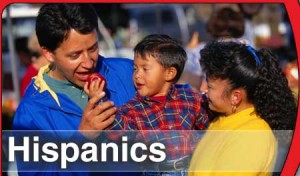Hispanounidenses
One of Hispanics’ greatest cultural resources in the United States is their native language, Spanish, which brings together more than forty million people from all over the world.
Whether we’re from Spain, Mexico, Argentina, Chile, El Salvador, Guatemala, Uruguay, Cuba, or any other Spanish-speaking region, the Spanish language is the most powerful symbol of our identity as Hispanics, and forms the nexus of a fundamental union that establishes a collective cultural identity based on our native language.
In much the same way as the United States has been and continues to be open to the growth and development of new cultural concepts and social movements, the Spanish language is as well. Spanish is especially creative. So it happens that a new and very influential term, “hispanounidense” has come into being, coined by the Academia Norteamericana de la Lengua Española (North American Academy of the Spanish Language). The organization, founded in 1973, is one of 22 existing academies promoting our language worldwide. A charitable organization, its mission is to foment and encourage the correct use of the Spanish language in the United States.


This new word, “hispanounidense”, is a neologism that describes people of Hispanic origin that may or may not speak Spanish, who reside in the United States. For many, as compared to terms used up until now, Hispanics, Latinos, etc, the term more accurately defines Hispanic Americans. This new vocabulary answers the pressing need to create a new word that better defines a population that already exists. Hispanics have become a decisive force in American society, and a new and more adequate word to describe us is urgently needed.
As typically happens with language, it will be individuals who adopt and make a word grow in importance or discard the word in favor of another. On this occasion the word itself is the offspring of the Academia Norteamericana de Lengua Española (ANLE), but if the word becomes popularly used as part of daily speech, it will be because it fits in so perfectly in the Spanish language, without seeming out of place. This has also happened with other words and phrases used in American Spanish, considered unacceptable Anglicisms in their moment, but that because of years of popular and repeated use, now form a legitimate and acceptable part of the Spanish language.
Even so, it’s convenient to mark the line between words like “hispanounidense”, and a certain other language phenomenon in the United States, so-called Spanglish. Spanglish is a linguistic reality in this country, a natural and unique byproduct of English and Spanish’s influence over each other. Like any other street-lingo, Spanglish has its value and we shouldn’t turn our backs on it, but it isn’t an excuse or a good reason to speak Spanish incorrectly or to avoid learning English. Spanglish is a cultural phenomenon that must be accepted and can be useful on the street, but formal, grammatically correct Spanish and English must be made priorities, as mastery of these two languages leads to personal and professional success.
Within this passionate linguistic landscape, as alive and dynamic as it may be in a culturally active country, the ANLE serves a valuable and even heroic purpose. With limited funds, little government support (from Spain, the United States or any other country), the Academy defends Spanish and initiatives encouraging its correct usage. For example, the organization has made an agreement with GobiernoUSA, a United States Government Agency that informs and helps Hispanics on-line via its web pages. The ANLE recently assessed the agency so that the Spanish used by employees and in official communications would be the most correct possible. Also, the academy has published a book “Speaking well, people understand each other” (Ed. Santillana USA), which includes more than 300 tips for using the Spanish language, that are also broadcasted weekly on the Spanish language television network Univisión.
ANLE is the maximum authority on the Spanish language in the United States, a recognition that it has been awarded by the federal government. From this position, it defends the best possible use of the Spanish language, spoken and written. The academy’s purpose is simple, to keep of new generation’s native language, culture and origins alive. This can be challenging, because the best way to conserve the correct use of Spanish is through education and the creation of wealth within the population. Hispanic young people must not abandon school or university, and an educated Hispanic middle class must exist in order to guarantee the survival of the Spanish language and its correct usage in the United States. Education permits not only the best preservation possible of a language, but also encourages greater cultural conscience and linguistic pride. The reasons are elemental: Spanish connects you with your Latino cultural roots; Spanish is a universal language that is spoken by more than 400 million people worldwide; Spanish is the basis for a genuine, diverse, tolerant and very rich cultural heritage, that is a motor for development in and of itself, an opportunity for progress that is supported through bilingualism, and a channel for communication that permits opening the doors to a Latino culture that enriches the United states in an integral way, making mainstream American society more vibrant, by increasing its potential through diversity.
The Hispanic-American middle class in America is increasingly better educated, and has a strong its social presence, and influence in mainstream American culture. The integration of Hispanic Americans or “hispanounidenses” presents a great opportunity for a natural segue into bilingual education, and biculturalism. These initiatives and not big government programs, is what will allow Spanish to grow as a language while being correctly used in the United states in tandem with American English.










2 thoughts on “Hispanounidenses”
Comments are closed.